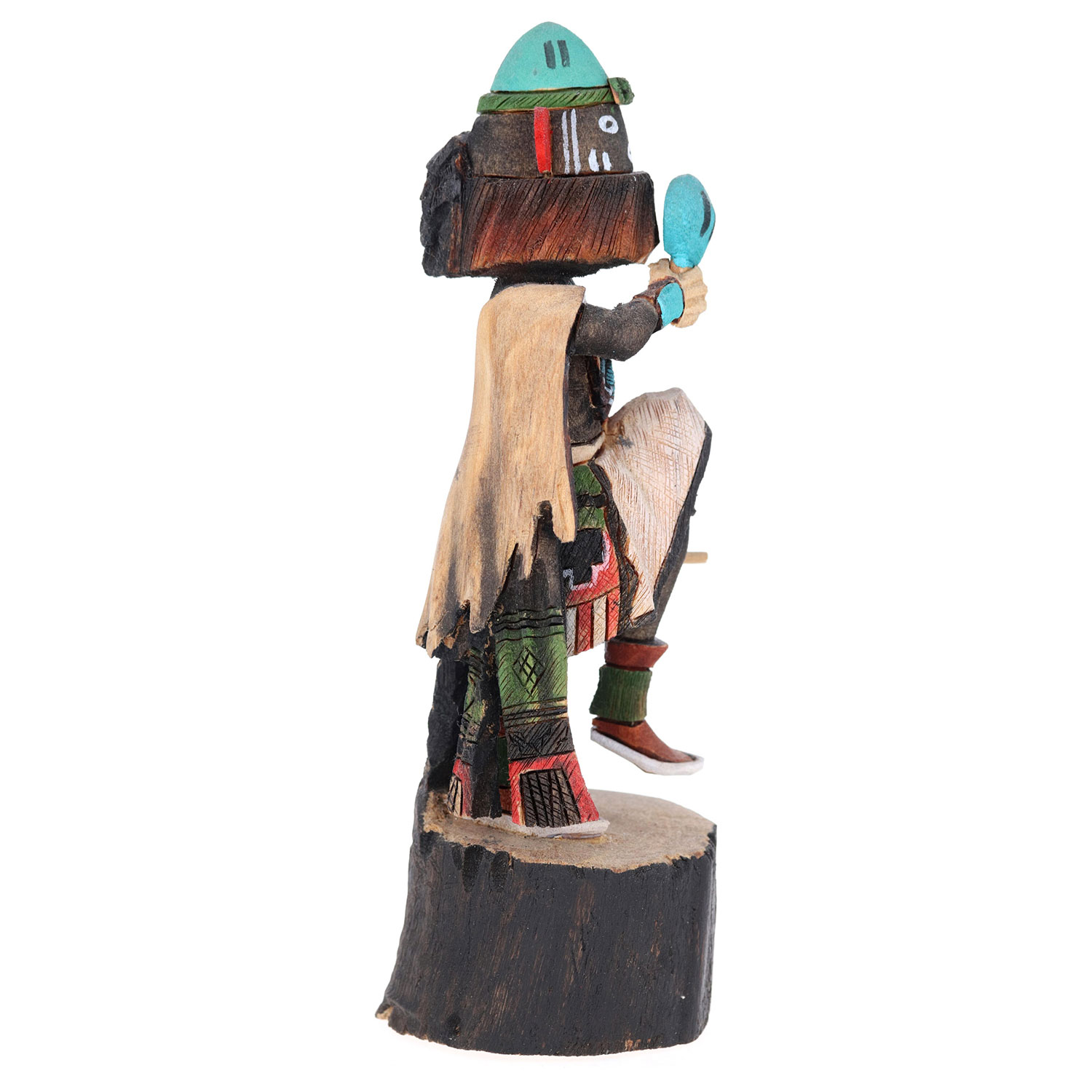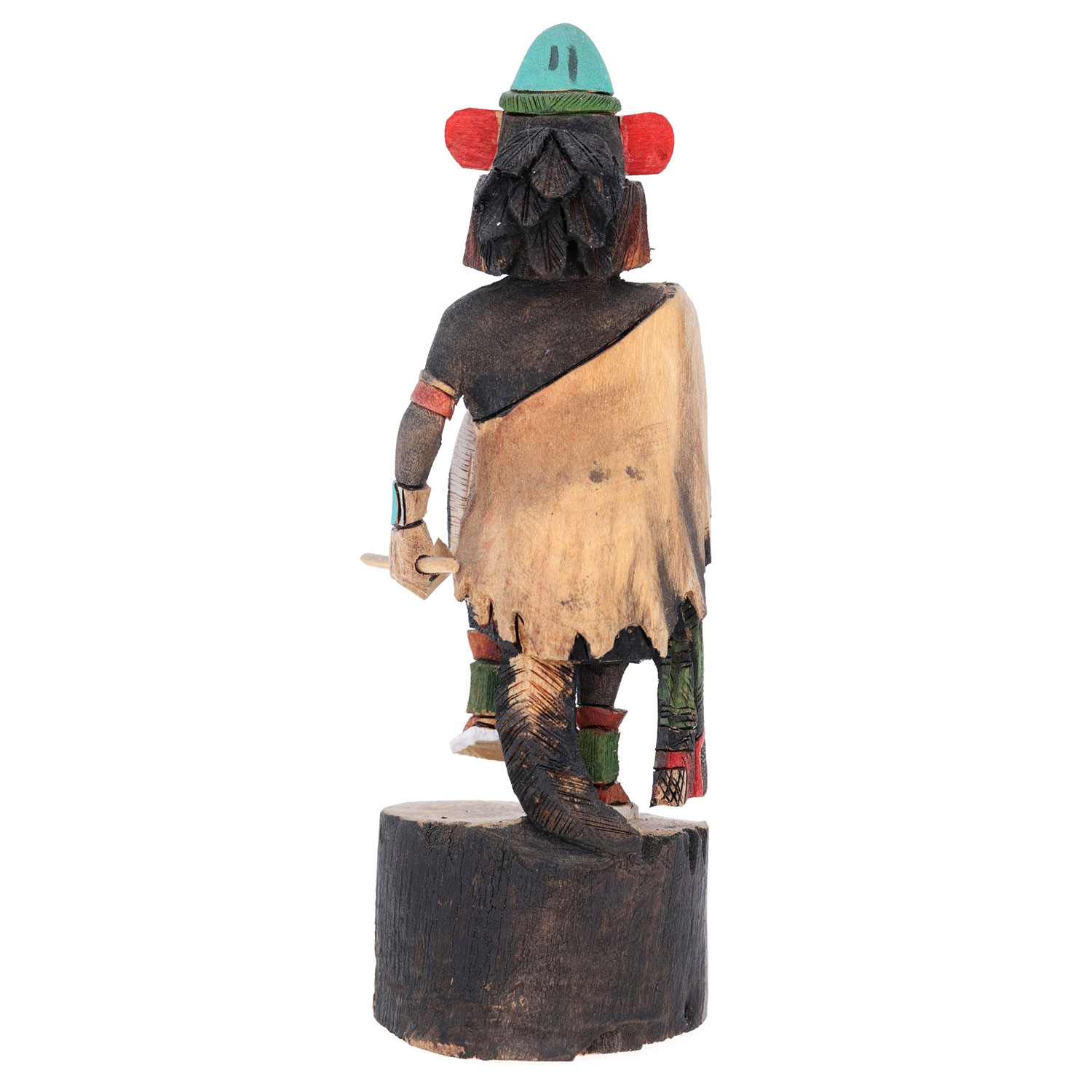Warrior Twin Katsina
History of Katsinas
Katsina Carvings also known as Kachina Dolls are gifts given in hope of future, abundance, and health, as well as tools for education. Katsinas are traditionally carved from the roots of cottonwood trees and near the Hopi lands. The Hopi word for cottonwood root is paako, which means water wood. The cotton-wood root’s ability to seek and find abundant water, mirrors the ability of the katsina to do the same for the Hopi people. For the Hopi, Katsinas are the bridge the spiritual world and mortals. Each year Katsinas walk upon the earth and they dance to bring life.
There are more than 250 different Katsinas, each with its own separate attributes, representing everything from animals to abstract concepts.


